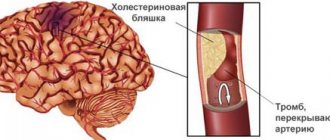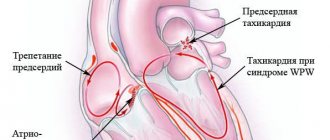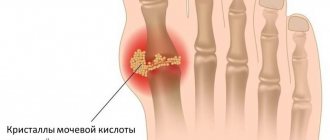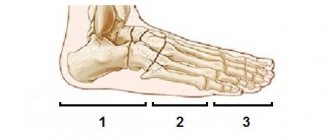Is persecution mania an independent mental disorder or a symptom of other diseases? Causes, stages and classification of persecutory delusions. What signs may indicate that a person has persecution delusions? What is the danger of a severe form of this disorder, is it possible to get rid of it and how to do it? We decided to discuss this problem in detail with the chief medical doctor, leading psychiatrist, psychiatrist-narcologist and psychotherapist of the clinic, Vladislav Sipovich.
What is delusion of persecution, popularly known as persecution mania?
You correctly emphasize the name of this mental disorder, since in the medical classification it is defined as one of the types of the broader concept of delusional disorder. In common parlance it is known as persecution mania. Paying tribute to the prevalence of this concept, I will use it along with the official name. A recognized synonym for delusions of persecution is the name “persecutory delusion,” which is based on the Latin word persecutio, which translates as persecution.
So, persecution mania - what is it? First of all, this is a disorder of the subject’s thinking, the main manifestation of which is his unshakable and obsessive conviction that he is the object of persecution by another person or group of persons. Moreover, the conviction of persecution is the result not of logical conclusions, but of an erroneous understanding of current events and an incorrect perception of reality. Manifestations and facts of persecution include not only surveillance and surveillance, but also the insidious plans of imaginary enemies, including bullying, violence, abuse and even murder. The number of pursuers may include neighbors, colleagues, ordinary passers-by, the government, intelligence agencies, secret organizations of various kinds, aliens and simply fictional characters.
The consequence of delusions of persecution is the subject’s special behavior, manifested in extreme distrust, a secluded lifestyle and self-isolation. By the way, amid the COVID-19 pandemic, some people with delusions of persecution have developed a fear of violent infection with the coronavirus. For example, that someone is specifically following him to cough or sneeze right in his face, leave marks on the door handle, plant an infected item, etc. A natural complication of this condition is even greater self-isolation, and if it is violated by strangers, pronounced aggression.
Typical of delusions of persecution are “cunning” ways of avoiding surveillance - an unexpected change of different types of transport, jumping out of it after the start of movement, and in the subway a second before the doors close, sudden changes in the walking route, leaving establishments through the back door, etc. In most cases, all these actions are unsafe both for the subject himself and for the people nearby. For example, a minibus driver may suddenly brake; while looking for an emergency exit, one may become the object of security attention or scare the employees of the establishment, or violate sanitary standards in the kitchen or medical facility. Trying to hide from persecution, a person behaves inappropriately due to fear and anxiety, is not able to be critical of his actions, to sensibly assess their consequences and the reactions of others. By the way, it is people with delusions of persecution who most often become “professional” complainants, sending their complaints to various authorities and filing lawsuits in the courts. This phenomenon is called querulanism and means an irresistible craving for litigiousness regarding the infringement of one’s rights and interests, often unfounded or significantly exaggerated. And the more such a person receives refusals of his claims, the more he becomes convinced of the bias of judges and officials. The idea of imaginary injustice towards oneself begins to dominate in his mind, becoming overvalued by ideas and causing complete disregard for the rights and interests of others. In severe cases, paranoid delusional disorder develops.
And one more feature of patients with persecution mania is that they are not inclined to share their fears with others, because... They generally do not trust people and assume that even within their close circle of friends there may be hidden ill-wishers or “enemy” agents.
Rules of behavior with the patient
Patients with persecutory delusions most often do not realize their illness and are confident that they are right, so they should not be blamed for the manifestation of symptoms that seem delusional, unreasonable and unclear to a healthy person. It is necessary to be understanding and friendly, to reassure the patient during periods of panic, severe anxiety or fear and not to laugh at his problems.
It is not advisable to tell the patient that there is no persecution; it is impossible to convince him of this, therefore, by these actions, in the patient’s mind, one can classify oneself as an “accomplice” of the persecutors and lose the patient’s trust.
It is necessary to be prepared for the patient’s aggression and hostility, therefore it is important to maintain composure, patience and goodwill, not to raise your voice, not to use physical force; this can frighten the patient, which will affect his trust in the person and negatively affect the further process of treatment.
It is worth remembering that delusions of persecution are a serious and difficult to treat illness in severe stages and in combination with schizophrenia, therefore it is impossible to live with a sick person and constantly reassure him; this does not contribute to recovery in any way. The best solution when detecting symptoms of the disease is a consultation with a specialist psychotherapist or psychiatrist.
Persecutory thought disorder has symptoms and signs characterized by obsessive thoughts about persecution. In advanced stages, delusions of persecution become dangerous both for the patient himself and for those around him, so it is important to consult a specialist for qualified help even during the first manifestations of symptoms.
What are the causes of persecutory delusions and how is it related to other mental illnesses?
The etiology of the disorder is not precisely known. It is assumed that delusional ideas may be a consequence of such phenomena as: • genetic predisposition; • disturbances in the functioning of the central nervous system associated with mental illness; • psychological trauma (negative family environment, social problems, etc.); • constant stress with excessive nervous tension. • alcohol, drug or drug poisoning; • organic brain damage (Alzheimer's disease, cerebral atherosclerosis, traumatic brain injury, tumors, etc.); Most experts believe that persecution mania comes from childhood, when the psyche is formed under the influence of various negative socio-psychological factors. Among them, the most common causes of the disorder are the following: • Any type of intimidation of children, even with the best intentions. For example, instead of simply explaining why you can’t take anything from strangers or go somewhere with them, parents often scare the child with scary stories and examples. It sounds like a rhyme from a Soviet film: “A terrible-looking monster grabbed an unfortunate child!” Maintaining this childhood fear can naturally develop into a persecution mania in the future, when the already grown-up child will be wary and wary not only of unfamiliar strangers, but also of those with whom he is forced to communicate closely. Naturally, this will not contribute to his development and career growth. • Ignoring children's fears, when adults do not pay enough attention and leave without elaboration the facts that caused fear in the child. • Viewing content that does not comply with age restrictions. Adult “horror” films, action films and bloody scenes can cause irreparable harm to an unstable child’s psyche. • Acts of violence or assault experienced in childhood, when the child is a witness or even a victim of a crime and is unable to resist. The violent death of relatives or friends is especially sensitive to him. • Unfair or false accusations of offenses that the child did not commit. • Staying in places of deprivation or restriction of freedom.
The majority of the scientific medical community considers delusions of persecution not as an independent disease, but as a syndrome characteristic of various diseases. But in some cases, persecutory mania can also be an isolated delusional disorder with more severe symptoms. Quite interesting are cases of induced delusions, when symptoms of persecutory mania occur in two interrelated subjects, but in fact only one of them suffers from it.
Statistics most often associate persecutory mania with the following diseases: • Schizophrenia, for which persecutory delusions are considered the most common type of schizophrenic delusion. In this case, the delusion has a systematic character, logically linked to the surrounding reality. The only thing that gives him away is the obsession of the idea and the change in self-awareness with the formation of a new “I”. In addition, subsequently the picture of delusion becomes more complicated and expanded due to emotional reactions to imaginary hints, ridicule, and bullying. And one more thing - the intellect does not suffer during persecution mania in schizophrenics. • Paranoid syndrome and paranoia. • Epilepsy in children, which is accompanied not only by seizures, but by psychoneurological personality changes - egocentrism, self-absorption, exaggerated attention to one’s health, fear, cruelty and aggression. Children with epileptics are characterized by sleep disturbances, disorientation, psychosensory disorders, and changes in sensations. Against this background, paranoid delusions of persecution with hallucinations and frightening fantasies are often formed. • Alcohol poisoning, so-called alcohol paranoid. It is characterized by unsystematized delirium with illusions (hallucinations) of images of murderers, maniacs, spies, agents, enemies, etc. • Drug intoxication.
When several mental illnesses are combined, delusional states and overvalued ideas may overlap. An example is the combination of alcoholic psychosis with a paranoid form of schizophrenia. In this case, even sensory hallucinations are possible. For example, with the idea of infection, the patient physically feels the penetration of microbes through the skin, nose or mouth, and with the obsession of poisoning - a burning sensation, a suspicious smell and taste. As a result, the mania's plot becomes more complex and poorly structured.
A connection between delusional ideas and organic brain lesions - atherosclerosis, Alzheimer's disease, tumors, injuries or strokes of the limbic system - has also been revealed.
Causes of senile paranoia
Unlike schizophrenia and some other mental illnesses, the appearance of signs of this disease is not associated with genetic causes (although some experts do not abandon this theory).
However, most doctors are of the opinion that pathology is primarily associated with internal psychological problems. Due to stereotypes of behavior and thinking, which are usually formed in childhood, numerous complexes, self-doubt, excessive pedantry, and rigidity of thinking are formed. All actions are performed only with an eye on the opinions of others. But signs of the disease appear either under the influence of stress factors (retirement, loneliness, loss of usual social status, awareness of the very fact of old age) or, what happens more often, due to age-related changes.
Atherosclerosis, thinning of vessel walls, deterioration of cerebral circulation leads to sustained ischemia of brain cells. This, in turn, negatively affects the ability to perceive and analyze information and adequately respond to what is happening. Gradually, this leads to the formation of systematized delusional ideas.
What signs indicate that a person is suffering from persecution delusions?
Persecutory mania, the symptoms of which I have already partially described, develops in stages and at each stage has its own characteristics and signs, less or more pronounced. Three stages of development and severity of delusions of persecution are differentiated, namely: • The first is mild, at which the first symptoms appear in the form of constant anxiety, irritability, fear of communication and elements of social phobia. • Second, or moderate severity. It is characterized by pronounced symptoms, antisocial behavior, difficulty or loss of the ability to communicate even with loved ones, the inability to fulfill one’s professional duties in full, and insomnia. A person becomes overly suspicious, easily loses balance, and experiences constant fear for himself, his health, life or property. • The third, severe stage of persecutory mania is characterized by a strong deterioration in general condition, the development of a depressive disorder, and increased fear and aggressiveness. The danger of this stage is that, being in a state of severe delirium, the patient can cause harm to himself and others. These can range from suicide attempts to attacks on other people in self-defense from their perceived “harmful” actions.
Some of the most typical symptoms of persecutory mania are the following: • An ongoing feeling of being stalked and being watched, threats to life and health posed by someone or something. • Distrust of people, even from close circle of friends, and excessive suspicion. • Closedness and desire for self-isolation. • Insomnia due to fear of falling asleep and not responding in time to the “machinations of enemies.” • Constant nervous tension, anxiety and fear. • Irritability and attacks of aggression. If you notice these signs in yourself or your loved ones, consult a doctor immediately. After all, you don’t know when the disease will get out of control and move to the next, more severe stage. Any stress can trigger accelerated development of persecution mania. This is especially true for delirium caused by vascular disorders complicated by age-related changes. With their usual way of life, patients can still cope with delusional ideas, but any deviation from it or severe stress can cause psychosis with illogical delusions of persecution, most often poisoning.
How to get rid of persecution mania? Methods of diagnosis and treatment.
When identifying symptoms of persecutory mania, the doctor must first determine the stage and severity of the disorder, as well as identify its connection with other diseases. For this purpose, the following diagnostic methods are used: • CT scan of the brain (BM) and skull makes it possible to identify vascular pathology, tumors, injuries and strokes, which are the root cause of the development of persecutory delusions. • MRI – scanning the brain, skull bones and nearby tissues to identify various pathologies. The safest and most informative method for diagnosing vascular and organic pathologies. • Electroencephalography (EEG) is a safe examination method for assessing the functional state of the brain. It also allows you to identify foci of excitation in epilepsy.
It should be noted that patients often come to the doctor when the disease is already advanced, severe, often with danger for the person himself and others. In this case, urgent hospitalization is required to relieve the most severe symptoms. This primarily concerns insomnia and relieving nervous tension. For this purpose, sedatives, tranquilizers and sleeping pills are prescribed. Subsequent therapy depends on the correct diagnosis, the root cause of persecutory mania, which can be identified by a thorough history taking during a conversation with the patient and his family, as well as the above examination methods.
Persecutory delusions are treated mainly with medication and are often prone to relapsing. Dissuading a person suffering from it is inappropriate, since the dissuading person can be attributed to him in the camp of enemies. Moreover, persecution mania is a mental disorder that cannot be cured by talking and saving conversations. This requires the mandatory assistance of a psychotherapist who knows both medicinal and psychotherapeutic methods of correcting the patient’s condition. The main areas of psychotherapy that are effective in treating delusions are individual cognitive behavioral therapy. Group classes are simply impossible due to total distrust of people - the patient will withdraw into himself even more and will never open up to the group. And the doctor must be as correct and careful as possible, in no way criticizing the content of delirium. He only works through anxiety, irritability, unobtrusively corrects behavior and deals with the patient’s social adaptation. Treatment and its timing are purely individual. Sometimes it can last for years, and sometimes, for example, if the disorder is caused by severe stress, the symptoms subside within a few days.
Drug therapy includes the following drugs: • Neuroleptics. • Antidepressants. • Typical and atypical antipsychotics. • General strengthening drugs. • Vitamins. • Drugs for the correction of metabolic disorders, especially in cases of delirium caused by various intoxications.
Patients usually agree to take medications and even integrate them into the system of their delusions. In particularly severe cases, electroshock therapy may be used, but this is the exception rather than the rule. As with any disease, timely seeking help from specialists at the first signs of persecutory mania is a condition for successful and effective treatment. What do you risk if you just come yourself or bring a loved one for a consultation with a psychotherapist in a private clinic? They won’t register you there, they won’t report you to the relevant authorities, but they will help dispel or confirm suspicions. In addition, the doctor can give recommendations to relatives on how to behave with the patient, and, if necessary, prescribe appropriate treatment.











